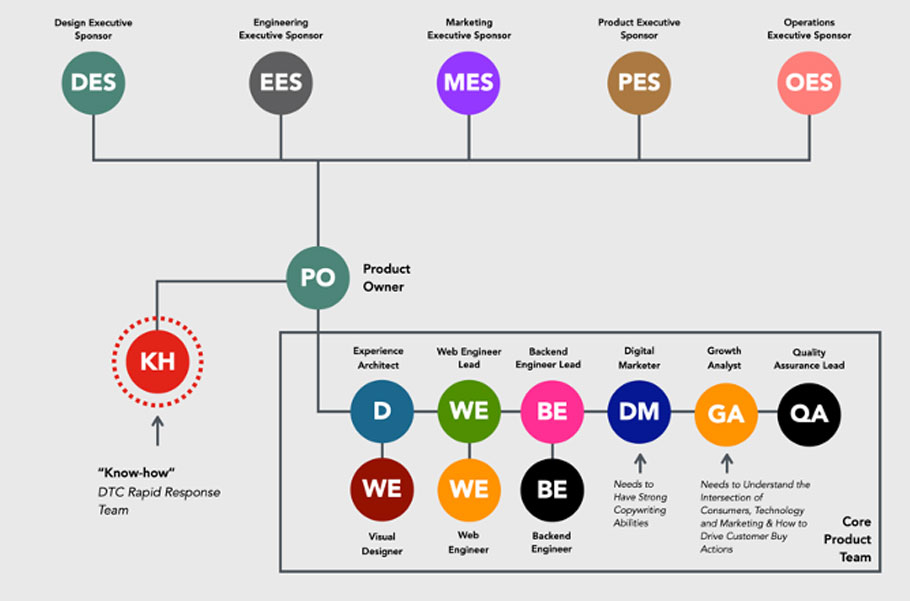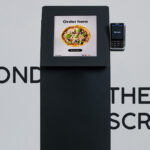Published by
Amid today’s ever-changing consumer landscape is a lingering question that many brands are grappling with. Should I sell my brand/product direct to consumers (DTC)? If you ask Google, this is very clearly a common topic as there are dozens of articles on this very question that have appeared in just the last few months. While the world around us continues to change, one thing is for sure: Consumer behavior has already changed and finding new and different ways to interact with your customers could mean the life or death of your brand.
Even brands that have very strong businesses that are doing well during this COVID-19 time are asking themselves this same question. I recently saw the article Business Insider published a few weeks back titled “How Frito-Lay Built a New DTC E-commerce Site Virtually in 30 Days Amid the Pandemic.” Or the follow up article just a few weeks later on the same topic. If a brand as successful as Frito-Lay is thinking this way, this tells me that it could be equally as valuable to businesses of all shapes and sizes. No matter the industry, people are buying and consuming products differently than they ever have before. And due to rising demand, even Frito-Lay knew that they had to think differently in order to keep up and best serve their customers. The answer: DTC.
As the articles mention, standing up a brand-new DTC channel can be challenging, but is totally possible, even in the midst of a pandemic. How can your brand make this happen? Here are three things to consider that can help you better serve your customers through direct efforts.
- An innovative mindset that was comfortable in ambiguity, yet aligned behind a common north star metric
- A cross-functional team including product, marketing, design, engineering, operations and product that maintained a united focus on a core MVP that didn’t fall prey to scope creep
- The support of a skilled digital marketing team that helped put the core launch and engagement blocks in place quickly without any major hiccups
The power of the north star metric
In any business, most successful projects start off with the creation of a solid strategy and plan of action which will serve as the blueprint that your teams will use to guide the delivery of their specific portion of the project.
No matter what, the plan needs to be crystal clear, dead simple to follow and properly layout the actions each team should take to collectively reach the desired destination. As digital consultants to many of the world’s leading companies, we believe the first step is to write down your customer’s motivations and desires which will lead to the creation of your products north star metric. The rest of the work lies in creating a prioritized list of initiatives and tasks aligned to the four pillars of your north star metric: 1. Breath, 2. Depth, 3. Frequency, and 4. Efficiency.
For example, your north star metric could be around items sold. Or visits to a site. Or level of engagement. One thing north star metrics are not normally about is revenue. Revenue is the thing that will come when the north star metric is reached. You must then create metrics under each of the pillars mentioned above and devise clear roadmap items that will allow you to reach each of these summary metrics.
The north start metric is even more important if you need to accelerate your product development journey as it will ensure that every team member is focusing on the right tasks which will compound together into a successful outcome (this for sure rings true in the Business Insider articles mentioned above). Even a few mistakes on a project that is moving that fast can cause it to fly off the rails very quickly.
Make sure the puzzle (a.k.a. team) has all the right pieces
Not only when trying to operate in such a tight timeframe, but anytime cross-functional teams come together, representatives from marketing, product, design, operations and engineering with the appropriate budget and decision-making ability must come together. This is a non-negotiable. You must be able to quickly activate any one or all of these groups and key leaders from each organization will help you move swiftly and efficiently. For example, if you need one of your existing warehouses converted from an operation setup for bulk-based truck deliveries into an operation setup for pick and pack shipped via UPS/FedEx/USPS, it will be imperative that someone on your cross-functional team can and knows how to make that happen really quickly.
This team of teams must align on the north star metric and product roadmap and begin to execute the list of tasks as defined in the planning phase. (Suggestion: set up these tasks in something similar to a Trello board if you don’t have an already used system in house.) It helps to have daily standups to discuss what tasks each team member completed, any blockers preventing them from completing a task and what task(s) they plan to complete between that meeting and the next. There is zero room for even a single resource to falter on delivery when doing something so important and likely in a compressed timeframe. Below is an example of how you could structure a team to take on an endeavor of this magnitude in such a short timeframe.

So, you’ve got a plan and a team ready to go. What’s next? Execution. This is obviously where the bulk of the work lies. Everyone must have tunnel vision on the MVP and fiercely defend against scope creep. In fact, it is more likely that you end up with less functionality than you set out to build which could be the result of difficult decisions the team makes throughout the process as a result of an unintended blocker arising.
Don’t forget about marketing
Between day one and day twenty, your digital marketing team should be creating all of the necessary marketing assets to support the launch, the copy for the trigger-based emails that will go out to users who place orders at your new DTC experience and getting them approved by your wider marketing approval process so that is in line with your overall brands message. DTC is not a new company inside your brand. It’s a new spoke off an existing hub that allows your brand to do new things to enhance what you already deliver to the market.
The digital marketing resource should also be meeting consistently with the marketing executive sponsor to plan the launch campaign and get the content together needed to deliver it. A solid press release, a well-coordinated series of social media posts and an interview with a well-known media outlet post launch is a solid strategy for an important DTC launch.
In closing, it is possible to take your brand DTC in a very short time period with the right plan and team in place. As to whether or not it makes sense for your brand to make the investment, that is something that is very situational but should be determined with the right information in front of you from a trusted source. Our advice is to take a second look at the benefits beyond “a net new revenue stream.” The ability to access first-party customer insights and engage directly with your consumers can be very valuable on multiple fronts.
One common objection most think of is the impact that DTC will have on relationships with existing retailers as it could be seen as a means to “cut them out of the equation.” Instead, think about it this way. A solid DTC platform can actually increase in-store traffic post launch. Imagine your marketing team having the ability to send mobile wallet pass coupons which are both linked to their DTC customer profile and are only redeemable in store. The customer is encouraged to go in-store to purchase and the DTC brand gets the real-time first-party customer data. There will always be a reason that DTC might not work for your brand. Instead, think about the opportunity cost associated with not going DTC. Will your brand survive long term? Whatever you determine your final course of action to be, we recommend you strike while the iron is hot, and the competition is still relatively low.
ABOUT THE AUTHOR
Tim is the lead of Bottle Rocket’s growth practice and an active thought leader on digital product growth in the marketplace.
Source #1 – https://www.businessinsider.com/how-frito-lay-built-new-dtc-e-commerce-30-days-2020-5
Source #2 – https://www.businessinsider.com/frito-lay-exec-how-snacking-giant-shifted-business-meet-demand-2020-5
Share:
Categories
tags
Related Posts


The Great Big Budget Cut: Prioritization


